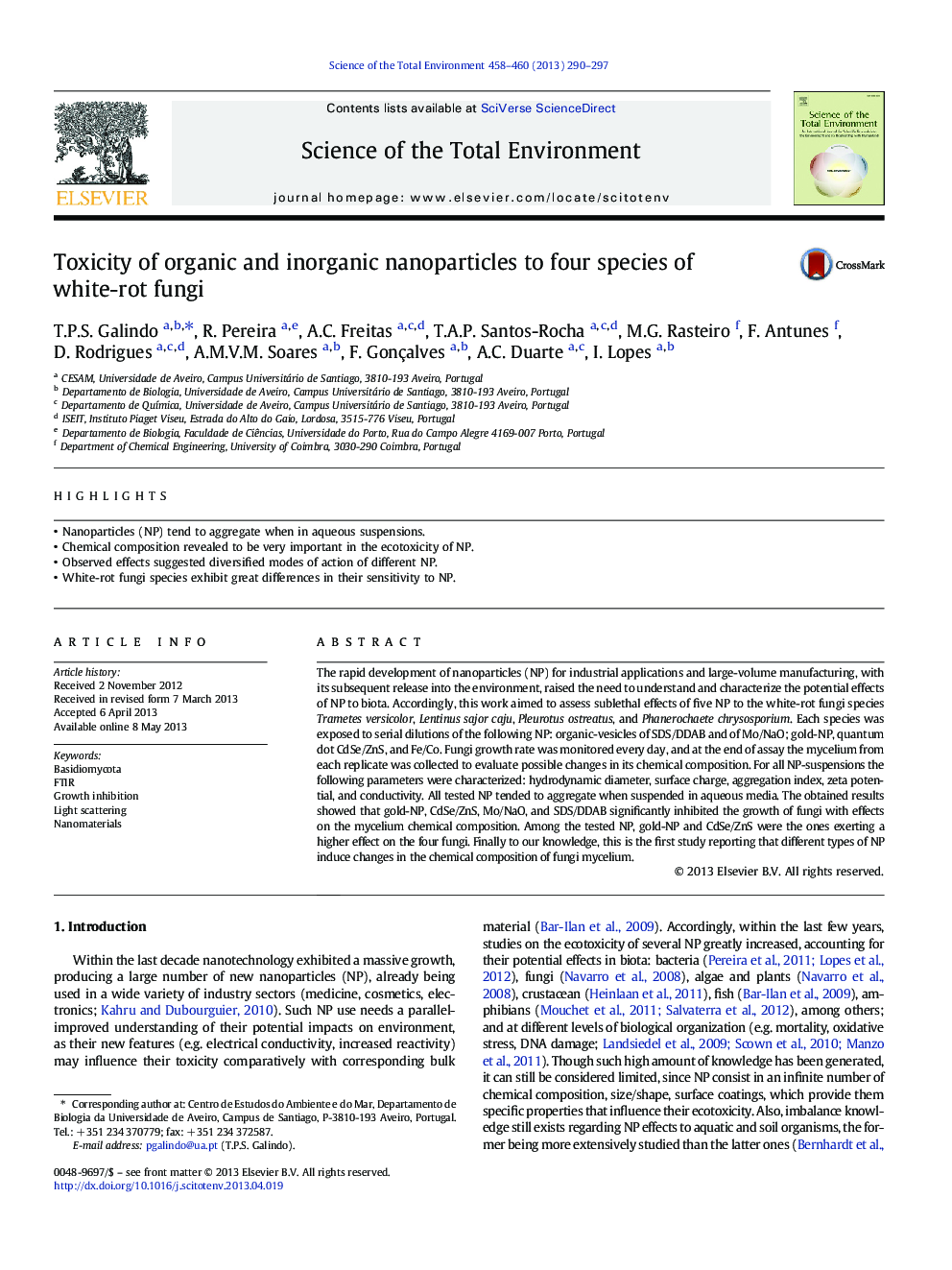| Article ID | Journal | Published Year | Pages | File Type |
|---|---|---|---|---|
| 4428631 | Science of The Total Environment | 2013 | 8 Pages |
•Nanoparticles (NP) tend to aggregate when in aqueous suspensions.•Chemical composition revealed to be very important in the ecotoxicity of NP.•Observed effects suggested diversified modes of action of different NP.•White-rot fungi species exhibit great differences in their sensitivity to NP.
The rapid development of nanoparticles (NP) for industrial applications and large-volume manufacturing, with its subsequent release into the environment, raised the need to understand and characterize the potential effects of NP to biota. Accordingly, this work aimed to assess sublethal effects of five NP to the white-rot fungi species Trametes versicolor, Lentinus sajor caju, Pleurotus ostreatus, and Phanerochaete chrysosporium. Each species was exposed to serial dilutions of the following NP: organic-vesicles of SDS/DDAB and of Mo/NaO; gold-NP, quantum dot CdSe/ZnS, and Fe/Co. Fungi growth rate was monitored every day, and at the end of assay the mycelium from each replicate was collected to evaluate possible changes in its chemical composition. For all NP-suspensions the following parameters were characterized: hydrodynamic diameter, surface charge, aggregation index, zeta potential, and conductivity. All tested NP tended to aggregate when suspended in aqueous media. The obtained results showed that gold-NP, CdSe/ZnS, Mo/NaO, and SDS/DDAB significantly inhibited the growth of fungi with effects on the mycelium chemical composition. Among the tested NP, gold-NP and CdSe/ZnS were the ones exerting a higher effect on the four fungi. Finally to our knowledge, this is the first study reporting that different types of NP induce changes in the chemical composition of fungi mycelium.
